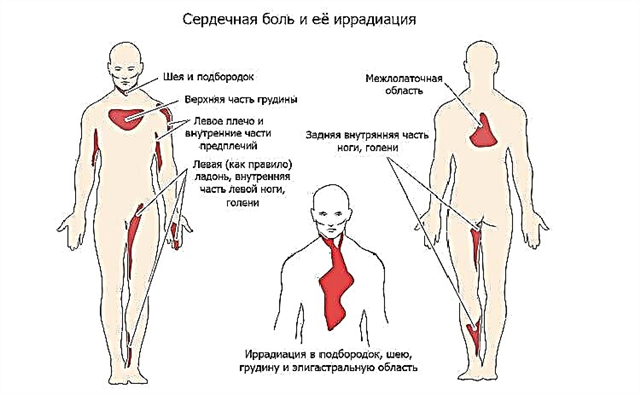Bilateral otitis media is one of the most common ENT pathologies characterized by inflammatory processes in the ear cavity. Pathological changes in the tissues proceed quickly, as a result of which complications such as hearing loss, autophony, deafness, etc. often occur. Bacterial and viral microorganisms often act as provocateurs of catarrhal processes in the auditory organ.
Causes

With the development of bilateral otitis media, the mucous membranes of both ears are damaged. As a rule, pathology develops as a result of inadequate treatment of inflammatory processes in one ear. The main cause of tissue destruction in the organs of hearing is pathogenic flora, represented by fungal, microbial or viral agents. That is why ear pathologies often develop against the background of general infections that affect the upper respiratory tract.
Most pathogens that cause inflammation are opportunistic pathogens. In other words, they reproduce only when favorable conditions arise. A decrease in the reactivity of immunity inevitably leads to infection of the ENT organs. Otitis media usually occurs as a complication of the following types of diseases:
- sinusitis;
- sinusitis;
- angina;
- pharyngitis;
- adenoids;
- rubella;
- flu;
- scarlet fever.
Hypothermia, inadequate antibiotic therapy, dysbiosis, vitamin deficiency or an allergic reaction can provoke a decrease in the reactivity of the body.
Etiology of otitis media in children
According to otolaryngologists, bilateral otitis media in a child is much more common than in people after 20 years. According to statistics, more than 45% of children under the age of one year experience ear pathologies. Such a high incidence is due to some physiological features of the structure of the organ of hearing in infants:
- looseness of the mucous membrane. In adults, the mucous membranes of the ENT organs are denser, which complicates the penetration of pathogens into the tissues. In children under one year old, they are still loose and therefore more susceptible to infection;

- insufficient length of the Eustachian tube. The auditory tube in children is located almost horizontally in relation to the nasopharynx. In addition, it is short, but wide, so pathogens easily penetrate the ear cavity, provoking inflammation in it;
- thickening of the tympanic membrane. Unlike adults, in children, the eardrum is very dense, therefore, in the event of a violation of the drainage function of the Eustachian tube, exudate quickly accumulates in the ear. Due to the increased density of the membrane, perforation does not occur, as a result of which exudate can penetrate into the meninges.
Untimely treatment of ENT disease in a child is fraught with the development of hydrocephalus, which is characterized by excessive accumulation of fluid in the brain.
Symptoms
During the period of acute development of ear pathology, it is necessary to prescribe adequate treatment, which would not only eliminate inflammation, but also prevent the transition of the disease to a chronic form. Bilateral otitis media in adults and children manifests itself in the same way, therefore it is necessary to consult a specialist if the following symptoms occur:
- tinnitus;
- sharp and aching pains;
- dizziness;
- malaise;
- hearing impairment;
- nausea;
- lack of appetite;
- hyperthermia;
- feeling of congestion;
- purulent or serous discharge from the ear.
Children under one year old are not able to complain of malaise or headaches, therefore, the following signs can signal the development of pathology:
- capriciousness;
- anxiety;
- tearfulness;
- hyperemia of the ear canal;
- discharge of exudate from the ear.
If during breastfeeding the baby begins to cry, this may indicate the development of otitis media. The pressure difference that is created in the nasopharynx and the tympanic cavity during sucking causes pain, which is signaled by baby crying.
Stages of otitis media
In 85% of cases, when patients refer to an ENT doctor, catarrhal inflammation of the middle ear is diagnosed. Bilateral acute otitis media is characterized by a vivid manifestation of the symptomatic picture, which made it possible to determine five main stages of its development:
- prodromal - accompanied by the appearance of general signs of malaise, muscle weakness and unobtrusive tinnitus;
- catarrhal - characterized by the occurrence of acute ear pains, which are accompanied by an increase in temperature;
- preperforative - the development of symptoms of the disease is increasing: ear and headaches intensify, fever appears;
- perforated - accompanied by perforation of the ear membrane, as a result of which serous exudate is evacuated outside, which leads to a regression of the symptoms of pathology;
- reparative - characterized by the restoration of auditory function, which is due to the regeneration of the tympanic membrane and scarring of the holes.
Important! The disease often turns into a sluggish form, as a result of which there are multiple complications, half of which are life-threatening.
Features of therapy
The optimal treatment for ear pathology can only be determined by a specialist. Self-medication in most cases is the cause of complications, in particular hearing loss, which does not respond to effective treatment. Before using classical therapy regimens, the doctor determines the etiological factors for the development of ENT disease, which makes it possible to navigate in the choice of suitable pharmacotherapy agents.
For the treatment of bilateral otitis media in adults and children, the following types of medications are used:
- ear drops ("Otofa", "Sofradex") - have a pronounced antimicrobial and antiviral effect, due to which the pathogenic flora in the ears, provoking inflammation, is destroyed;
- vasoconstrictor nasal drops ("Galazolin", "Combitropil") - help to reduce vascular permeability, which leads to the elimination of edema. As a result, the inner diameter of the Eustachian tube increases, as a result of which the outflow of fluid from the tympanic cavity is normalized;
- antibiotics ("Amoxicillin", "Cefazolin") - destroy the cellular structures of bacteria, which prevents their further development and, accordingly, the spread of infection;
- antiallergic drugs ("Allergomax", "Claritin") - eliminate pain and swelling in the affected tissues;
- sulfa drugs ("Co-trimoxazole", "Biseptol") - local antimicrobial agents that kill pathogenic bacteria in the ear cavity, which promotes recovery.
To eliminate hyperthermia, experts recommend using light antipyretics that do not affect the performance of the detoxification organs. These include Nimesil, Acetaminophen, Ibuprofen and Paracetamol. However, pediatricians do not recommend using "Analgin" as an antipyretic agent, since its use by children under 12 is fraught with the development of aplastic anemia.
When using antibiotic therapy for the treatment of children, drugs from the group of macrolides or cephalosporins are used. They are less toxic and therefore rarely cause allergic reactions.




